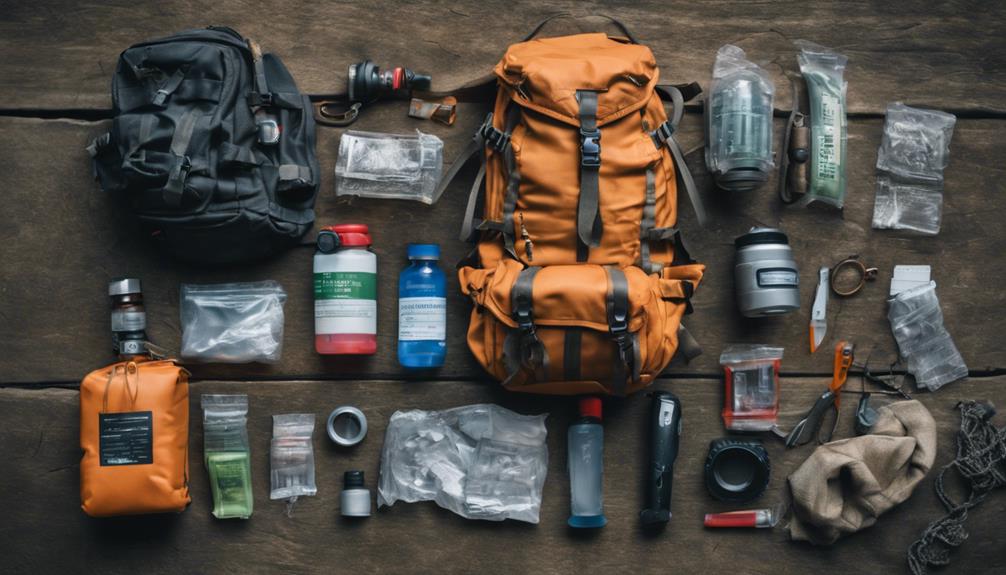To harvest wild foods unnoticed, blend your clothing with the environment by matching earthy tones and using natural face paint. Move slowly, heel to toe, and avoid sudden movements to minimize noise. Use natural cover like bushes or tall grass to approach and retreat, deterring detection. Focus on silence and deliberate actions, maintaining awareness of terrain and timing your foraging during low-activity periods. For more tips on staying hidden while gathering, explore further techniques that enhance your stealth skills.
Key Takeaways
- Use natural cover and terrain features to approach and collect wild foods discreetly.
- Move slowly and deliberately, minimizing noise with heel-to-toe steps and gentle handling.
- Wear camouflage clothing matching the environment to blend seamlessly into surroundings.
- Avoid leaving footprints or disturbed vegetation by controlling your steps and using natural concealment.
- Time foraging during low-activity periods to reduce the chance of detection.

Have you ever wondered how some foragers gather wild foods without attracting attention? It’s all about mastering stealth techniques that allow you to blend seamlessly into your environment. When you’re in high-risk zones, where discovery could mean danger or the loss of your foraging privileges, every move counts. The first step is understanding camouflage techniques. You need to select clothing that matches the colors and textures of your surroundings—earthy browns, greens, and grays—so you don’t stand out against the foliage. Cover your hands and face with natural materials or face paint that mimics the environment, further reducing your silhouette. The goal is to become virtually invisible, so your presence doesn’t trigger alarm or suspicion.
Master stealth by matching clothing to surroundings and using natural face concealment to remain unnoticed during foraging.
Equally important is practicing silent movement. This isn’t just about tiptoeing; it’s about controlling your body to minimize noise. Pay attention to your footfalls: walk heel to toe, rolling your foot gently and avoiding heavy steps that crush leaves or snap twigs. Move slowly and deliberately, taking small steps to maintain balance and control. Keep your arms close to your body, and avoid sudden movements that could produce sound or attract attention. When steering through dense brush or uneven terrain, use your hands to gently push aside branches or foliage instead of breaking them. This careful, deliberate motion prevents rustling sounds that could alert nearby wildlife or other foragers. Incorporating knowledge of high-quality projectors can help you plan your approach by analyzing terrain from a distance, ensuring your route minimizes disturbance.
Additionally, be aware of your surroundings at all times. Use natural cover—like bushes, fallen logs, or tall grass—to hide your approach. When you spot a target, approach quietly and cautiously, avoiding direct lines of sight or sound. Timing your movements during periods of low activity, such as early morning or late evening, further enhances your stealth. Remember, the key is to remain unnoticed not just by animals but also by people who might be monitoring the area. By combining camouflage techniques with silent movement, you considerably reduce your chances of leaving tracks or signs of your presence. This level of stealth lets you harvest what you need without disturbing the environment or risking detection.
In high-risk zones, your ability to stay hidden depends on your discipline and awareness. Every step, every move, should be calculated to preserve your anonymity. With practice, you’ll develop an intuitive sense for blending in and moving quietly—skills that turn you into a ghost in the woods, capable of gathering wild foods while leaving no trace behind.
Frequently Asked Questions
What Essential Gear Enhances Stealth Foraging Effectiveness?
To enhance stealth foraging effectiveness, you need essential gear that supports camouflage techniques and silent movement. Wear muted, natural-colored clothing to blend into your environment, and use face paint or masks to break up your outline. Equip yourself with soft-soled footwear to minimize noise, and carry lightweight tools for quiet harvesting. These items help you stay hidden and move smoothly, increasing your chances of success without alerting others or leaving tracks.
How Do Weather Conditions Impact Stealth Foraging Strategies?
Did you know that adverse weather can reduce visibility by up to 70%, making stealth foraging easier? You should adjust your strategies based on seasonal timing and weather conditions. In rain or snow, move slowly and stay low to the ground. Windy days can mask sounds, but avoid noisy foliage. Planning around weather helps you stay undetected, as weather impacts noise levels, visibility, and your overall approach to avoid leaving tracks.
What Legal Considerations Exist When Foraging in Protected Areas?
When foraging in protected areas, you need to respect legal boundaries and follow permitting requirements. You must research local regulations, as some zones prohibit collecting certain plants or fungi. Always obtain necessary permits before harvesting, and avoid restricted zones to prevent legal trouble. Ignoring these rules can result in fines or penalties, so stay informed and act responsibly to guarantee your foraging activities remain lawful and sustainable.
How Can One Identify Safe and Sustainable Foraging Spots?
Did you know urban environments can host diverse, healthy foraging spots? To identify safe, sustainable areas, observe signs of wildlife disturbance—like minimal human activity and healthy plant growth. Avoid areas with recent foraging damage or heavy foot traffic. Trust your instincts and look for lush, undisturbed vegetation, as these spots support local ecosystems and guarantee your foraging remains responsible and sustainable.
What Are Common Mistakes to Avoid During Stealth Foraging?
When stealth foraging, you should avoid common mistakes like neglecting tracking awareness and failing to minimize noise. Always stay alert to your surroundings and watch for signs of recent activity to prevent leaving tracks that could reveal your presence. Move quietly and deliberately, reducing any sounds that might alert others. Overlooking these details can compromise your safety and the sustainability of your foraging spot, so stay vigilant and discreet at all times.
Conclusion
Remember, stealth foraging is like walking through a shadowed forest—you must move carefully, leaving no trace of your passage. Every step is a whisper, and your presence is a fleeting breeze. By blending into the landscape, you become the silent guardian of the wild, preserving its secrets. Embrace the role of the unseen, for in the shadows, your respect for nature keeps its spirit alive, allowing it to flourish for generations to come.










